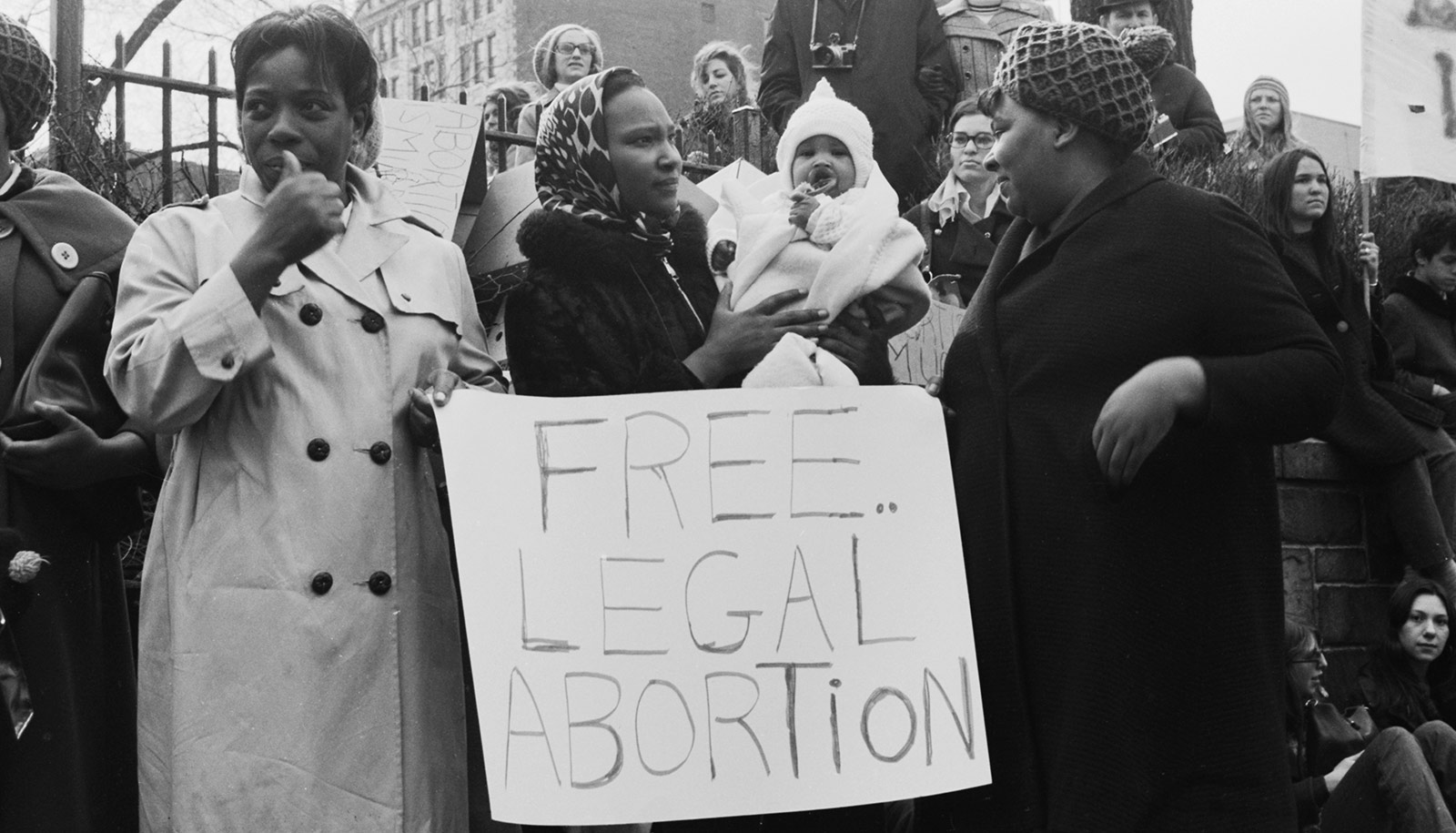State-level legalization of abortion produced a 30-40% decline in non-white maternal mortality, health records from the 1960s and 1970s indicate.
The state-level changes had little impact on overall or white maternal mortality, according to the working paper. The research team shared their findings at the winter meeting of the National Bureau of Economic Research.
Maternal mortality declined a hundredfold over the 20th century, yet Black women in the US are three times more likely to die from a pregnancy-related cause than are white women. The study highlights the impact of legal abortion in reducing non-white maternal mortality through declines in abortion-related deaths and indicates that early state-level legalizations were crucial and, in some cases, more consequential than the landmark Roe v. Wade decision itself.
“Our findings suggest that legal abortion was crucial for non-white women but not as critical for white women,” says study coauthor Lauren Hoehn-Velasco, assistant professor in the Georgia State University economics department.
“The larger effects for racial and ethnic minorities could be due to economic disadvantages. These groups may have had less financial ability to travel to states or other countries allowing abortions,” says coauthor Michael Pesko, associate professor in the economic department.
“Alternatively, a number of states allowed abortions in cases where the mother’s health was at risk prior to Roe v. Wade, and non-white women may have had less regular access with the health care system to identify problematic pregnancies and receive consent for abortions from physicians.”
Coauthor and graduate student Sherajum Monira Farin notes that while many previous studies have established an association or correlation between initial abortion legislations and decline in mortality in the US, this is the first to examine the causal aspect.
“While maternal mortality is still higher than we would like, there was significant progress made in the 20th century, and there are important benefits to understanding which social and legal phenomena led to our current condition,” says Velasco.
“In the case that Roe v. Wade were overturned, the US would return to a legal landscape similar to 1972… and access to safe, legal abortion would depend on each individual’s resources to travel or advocate for themselves in the medical system.”
Source: Georgia State University



